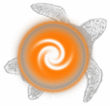Colour management |
Discworld Newbie Help |
Colour management |
Name
Colour Management - Making that text sensible!
Description
There are many different kinds of text sent to a player on Discworld: the description for the room you're in, says, the weather... Therefore it makes sense that there are also many different colours, so that each string of information can be easily recognised.
Unless you don't have colour enabled, the main uses of colour you might have noticed while running around the newbie area are the different colours used for the room description, the weather, the room exits, the newbie channel and NPC chatting. There are a few different ways to manage this text and customise its appearance to your personal taste.
In this help file, we're assuming that you have at least ansi colours. If you can't see colour, see the terms section at the bottom of this file.
Your Colour Options
Nearly every piece of text on the Discworld MUD can be customised. To see what events you can customise, type "options colour". This should give you a long list of event types. We won't go into what each of these events does specifically; you will pick them up as you play the game.
The main events you may want to change are "options colour soul" (when people soul you, for example: hug you, laugh at you etcetera), "options colour say" (what a player or NPC says) and "options colour tell" (when a player sends you a tell).
For example:
> options colour tell
Colour tell = [default] (The colour for tell messages)
Skye tells you: I am so happy to know that the womble has found its brooch at last!
> options colour tell = red
Set option colour tell to [red].
Skye tells you: I am so happy to know that the womble has found its brooch at last!
The Available Colours
The nine most commonly used colours are:
red magenta orange yellow green
blue cyan white (white) black (black)
You can also set backgroundcolours, for example by using "b_red" rather than "red", or "black b_green" for black on a green background. The complete list of colours is available using:
> colours list
Terms
Different MUD clients offer different colour support. Usually, this is handled automatically, so you don't need to do anything about it. However, if you do not see colour, you may need to change your terms setting by using either term ansi or term xterm256.
The first of these commands gives you the 8 colours listed above and their bold versions; the second should give you 256 colours. We recommend trying both with "colours list" to determine what terms setting you should be using. To let your client automatically handle this setting again, use term network.
